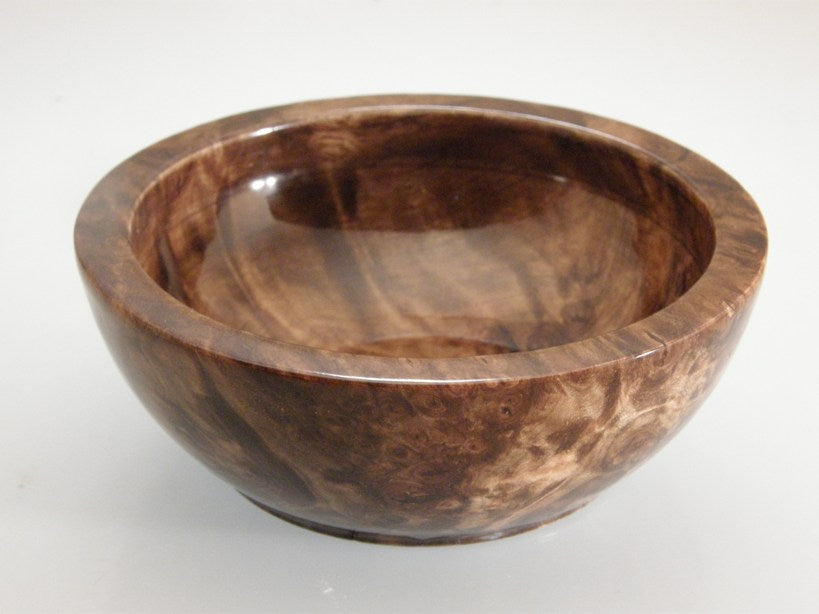Dr. Dittmar Germany
Shaving soap dish Caucasian walnut
Shaving soap dish Caucasian walnut
Couldn't load pickup availability
In connection with the production of a small series of shaving brush handles and razor handles from this most valuable wood in existence, we also had some shaving soap dishes made. Processing this wood requires special expertise, and sourcing the wood is impossible without insider knowledge.
The value of Caucasian walnut burl is well known to connoisseurs, as we learned: Caucasian walnut of the thickness required for this shaving bowl is actually used exclusively for the custom production of rifle butts.
Dr. Dittmar is arguably the only company offering soap dishes made from Caucasian walnut root wood. Naturally, the range is limited in quantity, so sales are made exclusively to end consumers via Rasur-Online.de.
Inner diameter: approx. 85 mm
Usable depth: 25 mm
In connection with the production of a small series of shaving brush handles and razor handles from this most valuable wood in existence, we also had some shaving soap dishes made. Processing this wood requires special expertise, and sourcing the wood is impossible without insider knowledge.
The value of Caucasian walnut burl is well known to connoisseurs, as we learned: Caucasian walnut of the thickness required for this shaving bowl is actually used exclusively for the custom production of rifle butts.
The wood is very rare, its extraction very difficult (see below), and the processing (with four coats of piano lacquer) is both incredibly complicated and time-consuming. Anyone who has ever attempted to varnish a concave or convex shape can imagine the latter.
Dr. Dittmar is arguably the only company offering soap dishes made from Caucasian walnut root wood. Naturally, the range is limited in quantity, so sales are made exclusively to end consumers via Rasur-Online.de. Dimensions:
Inner diameter: approx. 85 mm
Usable depth: 25 mm
Here are some interesting facts about the Caucasian walnut tree and its wood extraction and processing.
Walnut wood is one of the most valuable woods of all.
If you want to use the wood, you can't simply fell the tree; you have to dig it out ("stump it," "stuff it," or "crock it"). This expensive process isn't used for any other tree species. However, the most valuable burl wood is found in the lower part of a walnut trunk, extending deep into the ground as a root tuber. These grain patterns in the tubers, as well as in the forks of branches and the tops of the trunk, are very popular, as they display a vibrant yet unobtrusive pattern.
Almost every hunter has some walnut in their closet, as its special properties make this wood ideal for rifle stocks. It's tough, not very elastic, and doesn't shrink once dry. In terms of compressive and flexural strength, it achieves better values than oak and is also splinter-resistant.
But be careful:
The supply of walnut is very limited. Therefore, there are hardly any large solid wood furniture made from this species; it is usually veneered. And since nurseries have long focused on breeding high-yielding walnut trees rather than long-trunk varieties, it will be difficult to increase the supply in the medium to long term.
American walnut is often offered commercially alongside European walnut, but in these cases the wood usually comes from a walnut relative, the black walnut. Trade names such as African walnut, viola nut, and Tanganyika nut are also intended to refer to the walnut, but have nothing to do with it.
Source: homesolute.com


